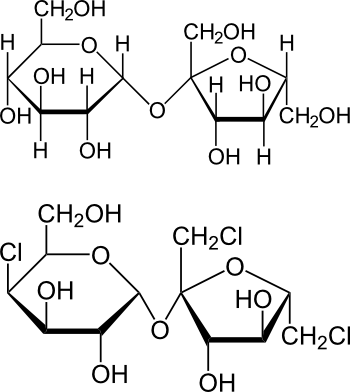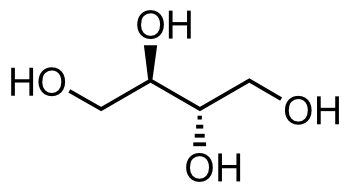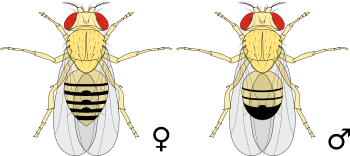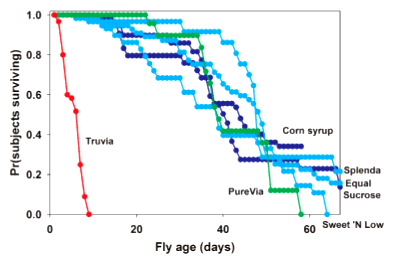One Man's Food...
June 13, 2014
The
Roman philosopher,
Titus Lucretius Carus (c. 99 BC - c. 55 BC), wrote
De Rerum Natura (On the Nature of Things), a
didactic poem about
physics.[1] It expounds the principles of
atomism, and it argues that
phenomena are cause by
natural forces and not by the intervention of
the gods.
Thomas Jefferson (1743-1826), who is arguably the most
scientifically literate
American president, had copies of this book in its original
Latin and several
translations in his huge personal
library. Jefferson's library
eventually became the
Library of Congress, replacing the original library lost in the
War of 1812. One memorable
quotation from Lucretius' book is
the following,
Ut quod ali cibus est aliis fuat acre venenum.
(What is food to one, is to others bitter poison)
- De Rerum Natura (On the Nature of Things), Book IV, l. 637
Our
quality of life has been greatly enhanced by
food additives, many of which retard
spoilage and others of which enhance
flavor. Most especially, people who choose to avoid too much
sugar now have many options for
sugar substitutes. You can avoid the
"white" packets by using pink, blue, yellow, or green packets. The green packets are a recent
innovation that didn't exist when I wrote about the
chemistry of sugar substitutes in an
early article (Pink/Blue/Yellow Packets, December 4, 2007).
The formerly predominant
artificial sweetener,
saccharin (C
7H
5NO
3S, 2H-1λ
6,2-benzothiazol-1,1,3-trione), was discovered accidentally by
Constantin Fahlberg of
Johns Hopkins University in 1878. Artificial is a good term for it, since it was derived from
coal tar.
Pink packets, contain saccharin as its non-nutritive sweet component. It also contains
dextrose and
cream of tartar, the purpose of which is to reduce the
bitter aftertaste of saccharin.[2] Pink packets have been available since 1957.
Calcium and sodium cyclamate (C
6H
12NNaO
3S, sodium N-cyclohexylsulfamate) is also used as a sugar-substitute in many
countries, and it was used in the
United States until 1969, when it was
banned. The US ban was based on a study showing that
intestinal bacteria can
desulfonate cyclamate to form
cyclohexylamine, a compound implicated in
bladder cancer and
testicular atrophy in
mice. More than fifty countries allow the use of cyclamate as a food additive.
Aspartame (C
14H
18N
2O
5, N-(L-α-Aspartyl)-L-phenylalanine, 1-methyl ester), a
methyl ester of
aspartic acid and the
dipeptide of
phenylalanine, is the sweetening component of the
blue packets, which contain dextrose and
maltodextrin as aftertaste reducing components. One of the
breakdown products of aspartame is
phenylalanine, so it must be avoided by people with
phenylketonuria.
The sweetening component of the
yellow packets is
sucralose (C
12H
19Cl
3O
8, 1,6-Dichloro-1,6-dideoxy-β-D-fructofuranosyl-4-chloro-4-deoxy-α-D-galactopyranoside). Sold under the trade name,
Splenda, sucralose is about twice as sweet as saccharin, four times as sweet as aspartame, and six hundred time sweeter than cane sugar (
sucrose). Since its approval for use as a food additive in the US in 1998, Splenda has achieved predominance in the artificial sweetener market.

Fraternal twins.
The sucralose molecule is sucrose with three hydrogen atoms replaced by chlorine.
(Molecular structure diagram of sucrose (top, by Don A. Carlson), via Wikimedia Commons; bottom diagram of sucralose by NEUROtiker, via Wikimedia Commons. Note that some hydrogen atoms are omitted for clarity.)
Since sucralose is essentially sucrose for which three
hydrogen atoms have been replaced by
chlorine (see figure), it was marketed using the
slogan, "Made from sugar, so it tastes like sugar." So, what did the
competitors do when they saw their business eroded by such innovation? Hire more
scientists? No, they claimed that Splenda was a
chemical compound being sold as sugar, and they hired more
lawyers. It all ended with an
out-of-court settlement, and the box now in my
cupboard simply states, "Tastes Like Sugar."
The pink, blue and yellow packets are
artificial non-nutritive sweeteners, but there's been the recent entry of the green packet contender, the components of which are
natural non-nutritive sweeteners. The green packets, sold under the
trade name,
Truvia, contain an
extract of the
Stevia rebaudiana plant,
rebaudioside A, along with the simple
sugar alcohol,
erythritol (C
4H
10O
4, (2R,3S)-butane-1,2,3,4-tetraol).[3] Erythritol, which occurs naturally in some
fruits, is an approved food additive in the US and many other countries.

Erythritol molecular structure.
(Via Wikimedia Commons.)
School science fair projects are a good way to introduce
students to the practice of
science. I participated in many science fairs as a student, and I acted as a
judge for several during my scientific career. Three years ago, Simon Kaschock-Marenda, a
sixth grade student at the
Julia R. Masterman School, a
Philadelphia, PA,
"magnet" school, needed a science fair topic. He decided that feeding non-nutritive sweeteners to
fruit flies (Drosophila melanogaster) would be an interesting topic.[4]

Drosophila melanogaster (female, left, and male, right)
(Via Wikimedia Commons.)
Simon's
father,
Daniel Marenda, is a
biologist who works with fruit flies at
Drexel University, so Simon had an accessible
mentor. Simon found that fruit flies feed Truvia died in six days. Simon and his father repeated the
experiment with better
controls in a Drexel
laboratory, and they got the same result. Further study showed that stevia wasn't the
culprit; rather, it was erythritol. Since erythritol is recognized as safe for
humans, there's the possibility that it can become the basis of a
nontoxic pesticide.[4-5]

Drosophila melanogaster longevity on various sweeteners.
(Fig. 1 of ref. 5, licensed under the Creative Commons Attribution License.[5]
Now, three years later, the results of a careful study have been
published in the
journal,
PLOS One.[5] Among the
coauthors are Simon, now 14 and in the
ninth grade, and his father. Drexel has applied for a
patent on using erythritol as an
insecticide with a hope that it will also prove effective against
Drosophila suzukii, a newly
invasive species in the US.[4]
Although the effect has been clearly demonstrated, it's not known how erythritol kills fruit flies, although fruit flies eating erythritol showed impaired
motor coordination.[4-5] Another sugar alcohol,
mannose, is toxic to
honey bees, but not fruit flies.[5] One interesting note, Simon didn't win a
prize in his sixth grade science fair.[4] That's probably good training for reaction to
peer review in later life.
References:
- Titus Lucretius Carus, "De rerum natura," J. D. Duff, Ed., Cambridge : The University Press, 1930 Titus Lucretius Carus, "Of The Nature of Things," William Ellery Leonard, Tr. (via Project Gutenberg).
- Marvin E. Eisenstadt, "Cyclamate-free artificial sweetener," US Patent No. 3,625,711, December 7, 1971.
- Steven J. Catani, "Erythritol-containing tabletop sweeteners and methods of producing same," US Patent Application No. 12/147,075, Publication No. 20090004355, Priority Date, June 29, 2007. Also published as CA2691547A1, EP2173191A1, and WO2009006200A1.
- Tom Avril, "Boy scientist in Manayunk finds sweetener that kills fruit flies," philly.com, June 5, 2014.
- Kaitlin M. Baudier, Simon D. Kaschock-Marenda, Nirali Patel, Katherine L. Diangelus, Sean O'Donnell and Daniel R. Marenda, "Erythritol, a Non-Nutritive Sugar Alcohol Sweetener and the Main Component of Truvia®, Is a Palatable Ingested Insecticide," PLoS ONE, vol. 9, no. 6 (June 4, 2014), Document No. e98949, doi:10.1371/journal.pone.0098949. This is an open access article, available as a PDF file, here.
Permanent Link to this article
Linked Keywords: Roman Empire; philosopher; Titus Lucretius Carus (c. 99 BC - c. 55 BC); De Rerum Natura; didactic; poetry; poem; physics; atomism; phenomenon; phenomena; Nature; natural forces; Roman deities; the gods; Thomas Jefferson (1743-1826); science; scientific; American; president; Latin; translation; library; Library of Congress; War of 1812; quotation; quality of life; food additive; decomposition; spoilage; flavor; sugar; sugar substitute; sugar packet; "white" packet; innovation; chemistry; sugar substitute; artificial sweetener; saccharin; Constantin Fahlberg; Johns Hopkins University; coal tar; Pink packet; glucose; dextrose; potassium bitartrate; cream of tartar; bitter; aftertaste; calcium cyclamate; sodium cyclamate; country; United States; ban; gut flora; intestinal bacteria; desulfonate; cyclohexylamine; bladder cancer; testicular atrophy; mouse; mice; aspartame; methyl ester; aspartic acid; dipeptide; phenylalanine; blue packet; maltodextrin; breakdown product; phenylalanine; phenylketonuria; yellow packet; sucralose; Splenda; sucrose; molecule; hydrogen; chlorine; Wikimedia Commons; NEUROtiker; slogan; competitor; scientist; chemical compound; lawyer; out-of-court settlement; cupboard; trade name; Truvia; extract; Stevia rebaudiana; rebaudioside A; sugar alcohol; erythritol; fruit; school; science fair; student; science; judge; sixth grade; Julia R. Masterman School; Philadelphia, PA; "magnet" school; fruit fly; Drosophila melanogaster; female; male; father; Daniel Marenda; biologist; Drexel University; mentor; experiment; scientific control; laboratory; culprit; human; toxicity; nontoxic; pesticide; longevity; Creative Commons Attribution License; scientific literature; scientific journal; PLOS One; coauthor; ninth grade; patent; insecticide; Drosophila suzukii; invasive species; motor coordination; mannose; honey bee; prize; peer review; Marvin E. Eisenstadt, "Cyclamate-free artificial sweetener," US Patent No. 3,625,711, December 7, 1971; Steven J. Catani, "Erythritol-containing tabletop sweeteners and methods of producing same," US Patent Application No. 12/147,075, Publication No. 20090004355, Priority Date, June 29, 2007.